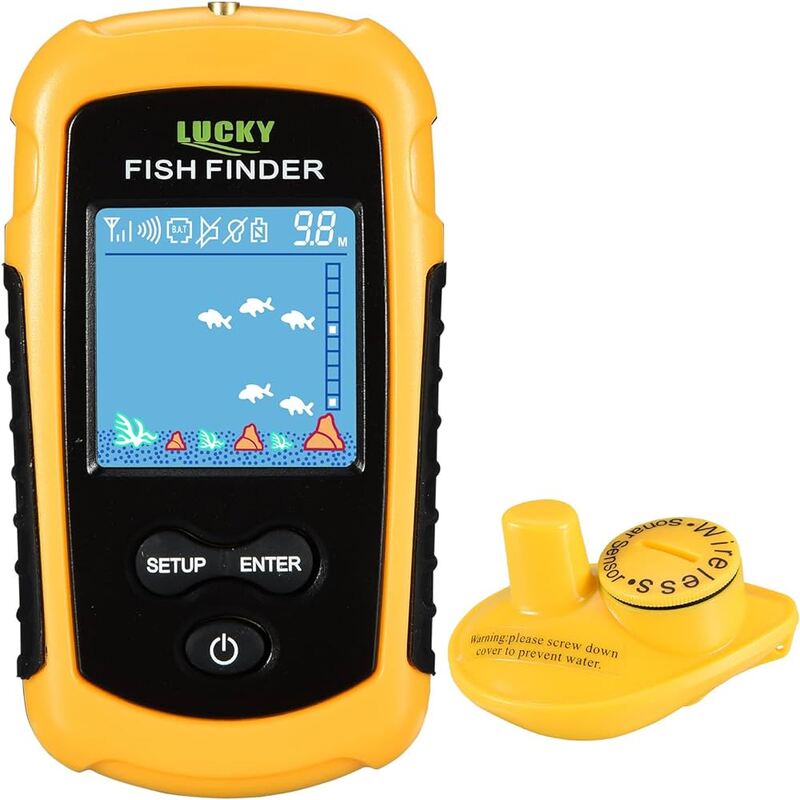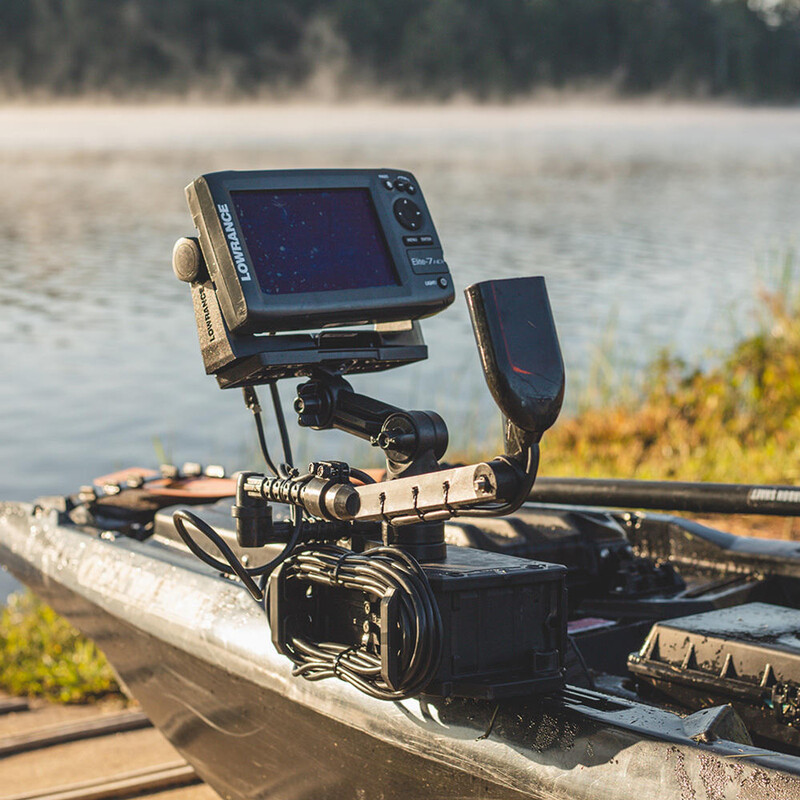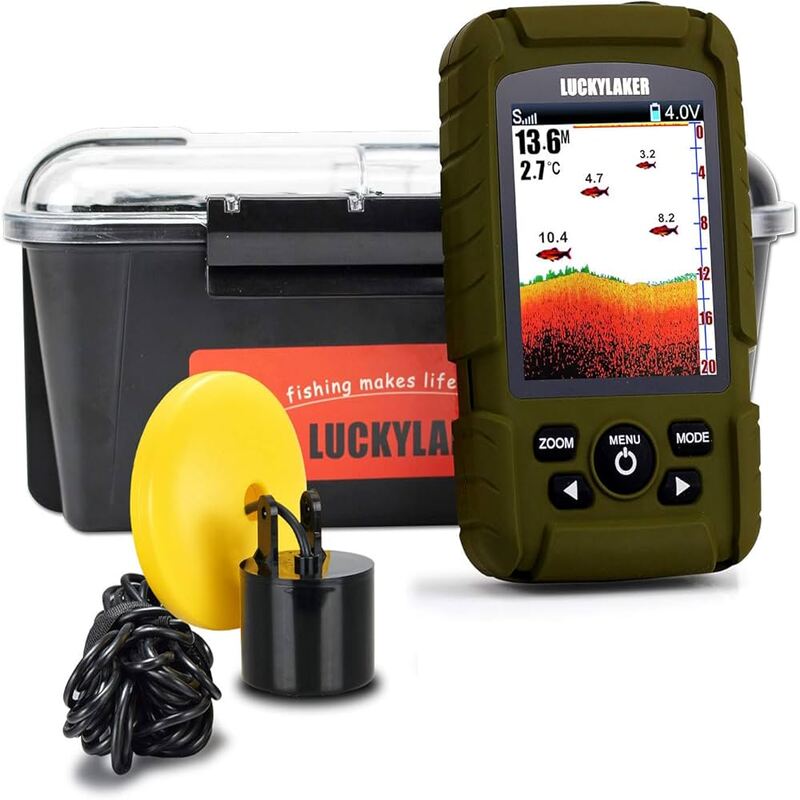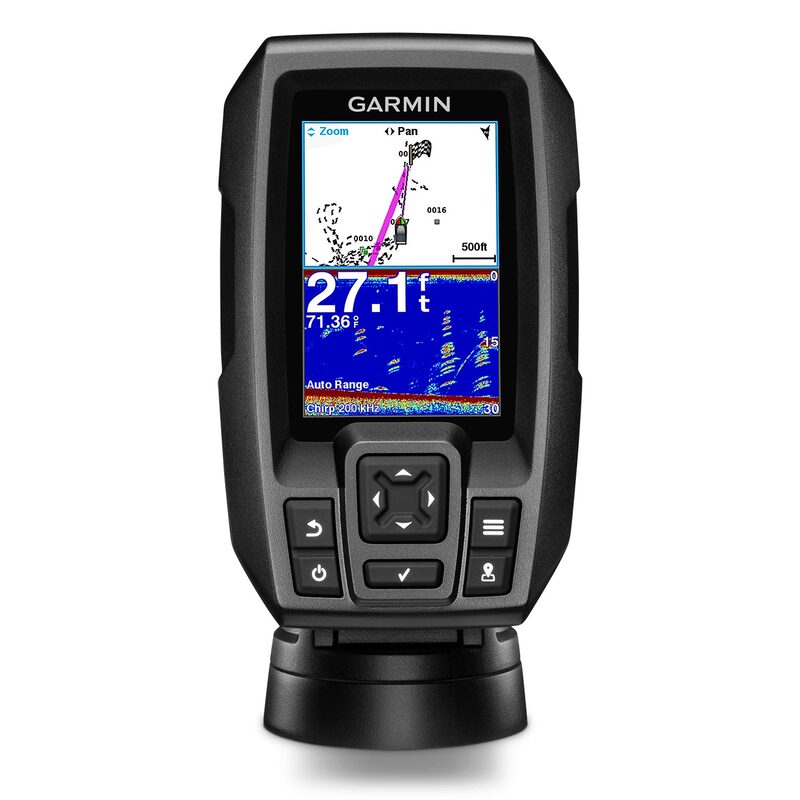Unveiling the Versatility of Fish Finders
Fish finders have revolutionized the angling experience, transforming the way we locate and target fish. But can these ingenious devices be used interchangeably in both freshwater and saltwater environments? The answer, in short, is yes. However, understanding the nuances of both aquatic realms and how fish finder operates within it is crucial for maximizing your angling success.
The Science Behind Fish Finders: Sonar Technology in Action
Fish finders rely on sonar technology, also known as Sound Navigation and Ranging, to paint a picture of the underwater world. The device emits sound waves, also known as pings, down into the water. These waves travel through the water column until they encounter an object, such as the bottom, vegetation, or, most importantly, fish. The waves then bounce back to the transducer, which converts the echoes into electrical signals. These signals are then interpreted by the fish finder’s display unit, creating a visual representation of the underwater environment.
Key Factors Influencing Sonar Performance
Water Density and Salinity
The density and salinity of water significantly impact the speed and behavior of sound waves. Saltwater, being denser due to its dissolved salt content, transmits sound waves faster than freshwater. This difference, while seemingly subtle, can affect the accuracy of depth readings and target identification.
Water Clarity and Suspended Particles
The clarity of the water also plays a crucial role in sonar performance. Suspended particles, such as algae, sediment, or organic matter, can scatter and absorb sound waves, reducing the clarity and range of the sonar signal. In turbid or murky water, the sonar signal may be weakened or distorted, making it more challenging to distinguish fish from other underwater objects.
Fish Finders in Freshwater Fishing
Advantages in Freshwater Environments
When fishing in freshwater settings, fish finders offer numerous advantages. Freshwater bodies, such as lakes and rivers, often have varying depths and structures. Fish finders assist in identifying underwater structures like weed beds, drop-offs, and submerged rocks. These structures often hold fish, making them prime locations for fishing. Furthermore, freshwaters can change conditions rapidly based on weather and seasons. Fish finders help anglers adapt quickly, making them more successful.
Essential Features for Freshwater Use
For effective freshwater fishing, some features are particularly beneficial. One critical feature is shallow-water capability. Many freshwater environments have shallow areas where larger boats cannot operate effectively. Therefore, a fish finder designed for shallow-water use can be invaluable. Additionally, temperature sensors are crucial in freshwater fishing. Fish often prefer specific temperature ranges, so knowing the water temperature can guide anglers in their choice of fishing locations.
Fish Finders in Saltwater Fishing
Advantages in Saltwater Environments
Saltwater fishing presents a different set of challenges. Larger bodies of water and diverse aquatic life can make locating fish more complex. However, fish finders excel in saltwater environments for several reasons. First, their ability to detect schools of fish is greatly enhanced by advanced sonar technologies. This capability increases the chances of a successful catch. Secondly, many saltwater fish finders come equipped with features tailored to ocean conditions, providing valuable data.
Essential Features for Saltwater Use
When selecting a fish finder for saltwater use, several essential features must be considered. One important feature is the ability to withstand harsh conditions. Saltwater environments can be tough on electronics, so corrosion-resistant materials are vital. Another important consideration is depth capability. Larger saltwater bodies can reach substantial depths, requiring a fish finder that accurately reads deeper waters. Features like dual-frequency sonar can provide better coverage and detail in these challenging conditions.
Adapting to Freshwater and Saltwater Environments
While the fundamental principles of sonar technology remain constant, understanding the unique characteristics of freshwater and saltwater environments is essential for optimizing your fish finder’s performance.
Freshwater Environments: Lakes, Rivers, and Ponds
Freshwater environments present a wide range of conditions, from still, clear lakes to fast-flowing, turbid rivers. These variations in water clarity, depth, and bottom composition require anglers to adjust their fish finder settings accordingly.
Sensitivity and Gain Adjustments
In clear freshwater lakes, reducing the sensitivity or gain setting can help prevent the display from becoming cluttered with unnecessary details. However, in murky rivers or ponds, increasing the sensitivity can enhance the detection of fish and other underwater structures.
Frequency Selection: High vs. Low
High-frequency sonar (200 kHz) is generally preferred in freshwater for its detailed imaging and target separation. However, high-frequency waves are more easily scattered in murky water. In such situations, switching to a lower frequency (50 kHz) can provide better penetration and a wider sonar cone.
Saltwater Environments: Oceans and Seas
Saltwater environments are characterized by their higher salinity, greater depths, and the presence of a wider variety of marine life. These factors necessitate further adjustments to your fish finder settings.
Compensating for Salinity
Many fish finders offer a salinity setting that allows you to adjust the device for saltwater use. This setting compensates for the faster speed of sound in saltwater, ensuring accurate depth readings and target identification.
Dealing with Thermoclines
Thermoclines, layers of water with abrupt temperature changes, are common in saltwater environments and can affect sonar performance. Sound waves bend as they pass through thermoclines, potentially creating false echoes or obscuring targets. Adjusting the sensitivity and using a fish finder with advanced features, such as down imaging or side imaging, can help overcome these challenges.
Choosing the Right Fish Finder for Your Needs
Understanding Transducer Types
The transducer is the heart of your fish finder, converting electrical signals into sound waves and vice versa. Different transducer types are designed for specific applications and water conditions.
Transom-Mount Transducers
Transom-mount transducers are the most common type, attaching to the boat’s transom. They are generally affordable and easy to install, making them suitable for smaller boats and casual anglers.
Through-Hull Transducers
Through-hull transducers offer superior performance, particularly at higher speeds and in rough water. They are installed through a hole in the boat’s hull, providing a permanent and streamlined solution. However, through-hull transducers require more complex installation and are typically more expensive.
Exploring Fish Finder Features
Modern fish finders offer an array of advanced features designed to enhance your angling experience. Understanding these features can help you choose the right device for your needs and fishing style.
CHIRP Technology
CHIRP (Compressed High-Intensity Radar Pulse) technology utilizes a continuous sweep of frequencies, providing significantly enhanced target separation, clarity, and depth penetration compared to traditional sonar.
Down Imaging and Side Imaging
Down imaging and side imaging provide photo-realistic views of the underwater world, allowing you to see fish, structure, and bottom composition in incredible detail. These features are invaluable for locating fish holding tight to structure or navigating complex underwater terrain.
GPS and Mapping Capabilities
Fish finders with integrated GPS and mapping capabilities allow you to mark waypoints, create routes, and track your movements on the water. This feature is essential for returning to productive fishing spots, navigating unfamiliar waters, and sharing your fishing adventures with others.
Best Practices for Using Fish Finders in Different Environments
Calibration and Maintenance
To maximize effectiveness, proper calibration and maintenance of fish finders are essential. In both freshwater and saltwater, regular checks ensure optimal performance. For freshwater fishing, anglers should check settings that adapt to shallow waters. Conversely, in saltwater scenarios, calibrating settings to accommodate larger depths is crucial. Regular cleaning of transducers is necessary in saltwater conditions to prevent buildup, which can distort readings.
Fishing Techniques Based on Environment
Employing specific fishing techniques enhances fish finder usage. In freshwater, techniques like “drifting” can yield success while utilizing fish finders to locate schools. Additionally, structure fishing, which focuses on underwater elements, works particularly well in freshwater settings. Meanwhile, in saltwater environments, casting towards identified schools reported by the fish finder increases success. Strategies may vary, but the fish finder serves as a constant resource.
Conclusion: The Future of Fish Finders
Technological Advancements
As technology advances, so do fish finders. Future innovations promise enhanced features that could benefit both freshwater and saltwater fishing. Augmented reality and improved sonar technology may offer new ways to visualize underwater environments. Additionally, the integration of artificial intelligence could tailor data to individual anglers’ preferences, creating a more personalized fishing experience.
Broadened Applications
The versatility of fish finders will continue to grow. As devices become more sophisticated, they will cater to a broader range of fishing scenarios. This versatility will make them indispensable for both novice and experienced anglers alike. In encapsulating both freshwater and saltwater fishing, fish finders represent significant advancements in how anglers approach the sport.
In summary, fish finders are suitable for both freshwater and saltwater environments. Their ability to enhance the fishing experience makes them invaluable tools. With the right features and techniques, anglers can effectively use these devices in varying aquatic conditions. Future advancements will likely make fish finders even more efficient, ensuring their relevance for years to come.







